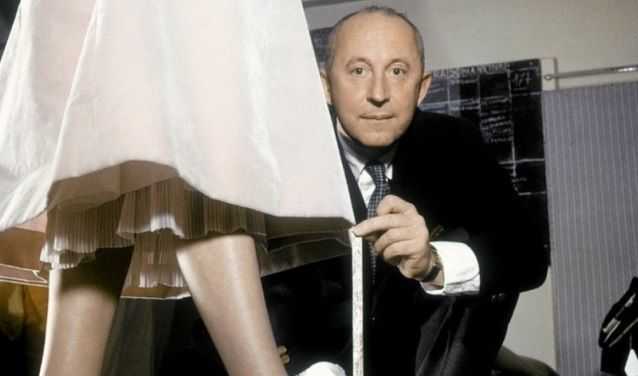Home>Christian Dior: A Passion for Beauty

10.08.2015
Christian Dior: A Passion for Beauty
A portrait of Christian Dior, a Sciences Po student from 1923 to 1926.
Christian Dior (1905-1957) was decades ahead of his time. While he was a student at Sciences Po, he never completed his degree, absconding in 1926 to follow a path which was to take him more towards the cabarets of Paris rather than its ministerial offices.
At today’s Sciences Po, he would be more easily acknowledged as an artist, designer and demiurge of the post-war woman. Son of the Norman petite bourgeoisie, the young Christian didn’t particularly imagine himself following his father’s footsteps. The world of industry, and the sailboats of Newfoundland also failed to inspire him. In those early years, he was happiest in his mother’s flower garden, and at the Granville Carnival too, where they went every year, far from the business of his father. There, the colourful floats, costumes and music swept the small-town boy into a world of joy, insouciance and beauty. Sadly, this carefree world would be rudely interrupted by the cannon fire of war.
Christian Dior, deeply affected by his brother’s experience during the Great War, headed to Paris with his parents. Back from four years of self-imposed exile in Granville, they moved into a new apartment which was very “Louis 16th arrondissement: a reassuring place, where the decor provided a harmonious backdrop for children in uniform, chambermaids in white aprons, recitations of poetry learned by heart, family dinners, the Poincaré franc and a whole life stretching ahead.”
CHRISTIAN WILL BE A DIPLOMAT
With his friends Max Jacob, Cocteau and Radiguet, he gathered regularly for dinners at the cabaret, “Le Boeuf sur le toit”. Despite the social whirl of Montmartre, Dior sat his Baccalauréat in June of 1923, imagining himself pursuing a liberal education à la André Gide at the Beaux Arts, rather than following a classic university curriculum.
However, his parents had different plans, leading him away from bohemia, and registering him for political sciences. “This required no real commitment. It was a hypocritical way of being able to continue the life which pleased [him] most.” It certainly put Madeleine Dior’s fears to rest: Christian would become a diplomat. In 1926, Christian Dior left Sciences Po without his degree, but with a number of good contacts. A jack-of-all-trades, provided they were beautiful ones, he tried his hand at selling paintings, did some drawing, and, after his military service, even managed to sell a few sketches to milliners and dressmakers.
At that time, the world of fashion was made up of many small houses, and a few major names like Robert Piguet, where Dior started in 1938. But sadly, war returned. After his discharge and his exile in the South, he moved back to Paris in 1941 to work for Lucien Lelong, the President of the Chambre Syndicale de la Haute Couture. Resisting pressure from the occupation government who hoped to shift Parisian couture to Berlin or Vienna, Lelong held on, maintaining haute couture’s standing in the capital, but not without compromise.
These were terrible years for the fashion world, and Dior himself would not remain unscathed. Indeed, his famous “New Look” collection of 1947 can be seen as a clear reaction to the masculine austerity of 1940s fashion. As a designer, Dior’s coming of age occurred with this single collection which would go on to influence over a decade of women’s fashion. It’s defining characteristics? A full skirt with a cinched waist that restricted breathing and required a corset. It was soon followed by rounded shoulders, heels, gloves and extravagant hats - everything that the war had prevented, requisitioned or eliminated.
The Dior woman was like a hothouse flower, living among the beautiful things that his mother collected for their apartments. Freed from the demeaning constraints of the war, she was once again the object of desire and admiration she had been in times of peace. But an object nonetheless: the New Look woman would represent a step backwards for the status of women in general. But no matter, for at least she symbolized the return of beauty and pleasure, becoming a sort of living work of art. Upon his death, while succeeded by Yves Saint Laurent, Dior would still leave behind him this idea of sparkling femininity, frivolous yet formally impeccable, this idea of a woman kept in check as much by her dress as by her taste. And this skilful construction would ultimately give rise to the timeless elegance which continues to influence our clothing today.
By Élodie Nowinski, Associate Professor in History, researcher in the history of fashion, Director of Studies for the Marketing masters programme at the Sciences Po School of Communication.